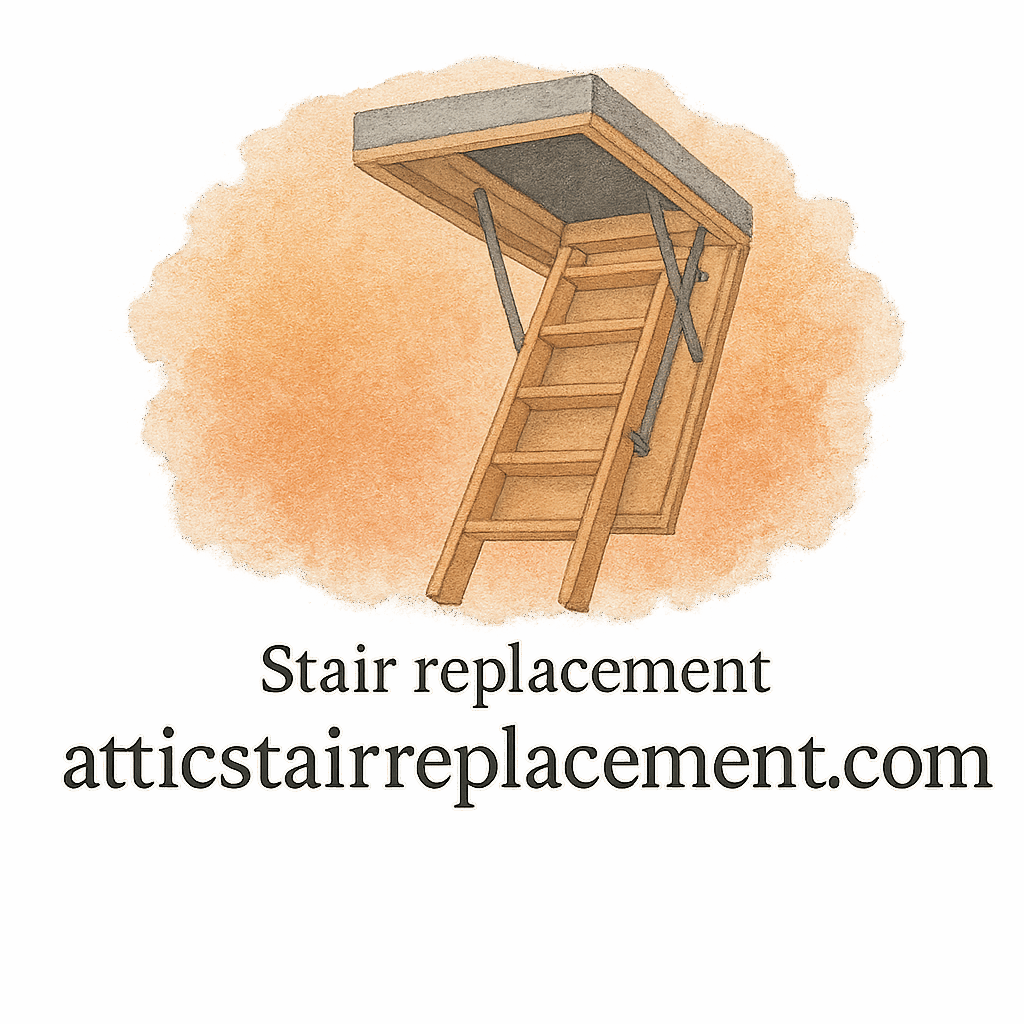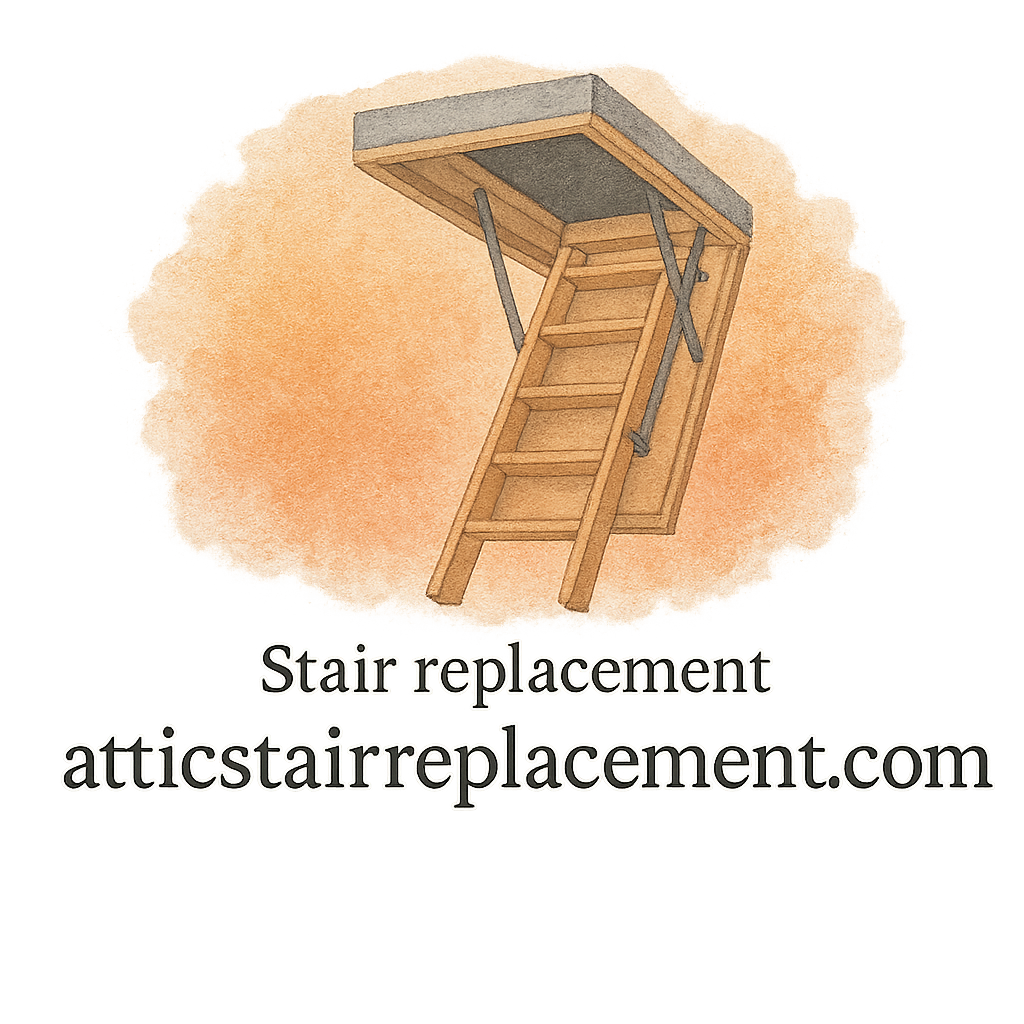Keeping your attic stairs in top-notch condition doesn’t end after the installation. In fact, what you do after an attic stair replacement is just as important as the initial job itself. Neglecting maintenance can lead to squeaks, wobbles, or even costly repairs down the road. That’s why I’ve put together this practical guide with 10 maintenance tips after attic stair replacement to help you extend the life of your stairs and keep them safe for everyday use.
Why Attic Stair Maintenance Matters
Think of your attic stairs like the tires on your car—they’re durable, but they won’t last forever without proper care. Regular maintenance ensures:
- Smooth operation without squeaks or stiffness.
- Improved safety for your family.
- Extended lifespan of your attic stairs.
- Prevention of hidden costs from major repairs.
Skipping maintenance might save you a few minutes now, but trust me, you’ll pay the price later in repairs or even another replacement.
For more insights on attic stair upkeep, check out expert advice.
Tip 1: Regular Cleaning to Prevent Dust Buildup
Dust and debris love to collect in the corners of attic stairs. If left unchecked, buildup can cause unnecessary friction on moving parts.
Best Cleaning Tools for Attic Stairs
- Soft microfiber cloth for wiping surfaces.
- Small vacuum with a brush attachment for crevices.
- Gentle wood-safe cleaner for stair treads.
How Often Should You Clean?
Once a month is a good rule of thumb. If your attic sees frequent use, a bi-weekly clean will keep things spotless.
Check out more DIY maintenance tips to make the job easier.
Tip 2: Inspect Hinges and Hardware
Your attic stairs rely on strong hinges and sturdy hardware to function properly.
Common Signs of Loose Hinges
- Creaking noises when folding or unfolding.
- Wobbly feel underfoot.
- Visible gaps where the hinge meets the wood.
Lubrication Tips for Smooth Operation
A quick spray of silicone-based lubricant every 2–3 months keeps the hinges moving freely. Avoid oil-based products—they attract dust.
Tip 3: Tighten Loose Screws and Bolts
Loose screws are like tiny warning signs your stairs give you. Ignore them, and they’ll eventually compromise stability.
Safety Precautions When Tightening
- Always use the right screwdriver or wrench.
- Don’t overtighten—you could crack the wood.
- Test the stairs by stepping lightly before fully folding them back.
This quick job prevents major alignment issues later.

Tip 4: Lubricate Moving Parts Regularly
Your attic stairs have multiple joints that need attention. Think of them as the knees of your home—they’ll wear out faster if they’re neglected.
Best Lubricants for Attic Stairs
- Silicone spray for metal parts.
- Dry graphite powder for areas prone to dust.
Apply sparingly every few months for smooth, quiet performance.
Tip 5: Check for Cracks or Wood Damage
Even the strongest stairs can develop cracks, especially under heavy loads.
How to Spot Early Signs of Damage
- Small splits on the steps.
- Warped or uneven surfaces.
- Stains or discoloration (a red flag for moisture damage).
When to Call a Professional Contractor
If you notice large cracks or sagging, it’s time to bring in a contractor. DIY fixes won’t cut it here.
Tip 6: Ensure Proper Alignment
Misaligned stairs aren’t just annoying—they’re dangerous.
Why Misalignment Happens
- Loose bolts.
- Warped wood.
- Incorrect installation.
How to Fix Alignment Problems
Most of the time, tightening bolts or adjusting the frame helps. If the issue persists, consult a guide or call a pro.
Tip 7: Test the Weight Capacity Periodically
Your attic stairs were built to handle a specific load. Over time, wear and tear can reduce their strength.
How to Safely Test Durability
- Step one at a time while carrying light boxes.
- Listen for unusual noises.
- Watch for wobbling or bending.
Signs Your Stairs Can’t Handle the Load
- Cracks under pressure.
- Bolts pulling away from the frame.
- Noticeable sagging mid-step.
Tip 8: Repaint or Refinish for Protection
A fresh coat of paint or sealant isn’t just for looks—it protects against moisture, scratches, and pests.
Best Paints and Sealants for Durability
- Water-resistant polyurethane for wood.
- Rust-proof enamel for metal parts.
Refresh every 2–3 years for maximum protection.
Tip 9: Prevent Moisture and Humidity Damage
Attics are notorious for fluctuating humidity, which can wreak havoc on your stairs.
Why Moisture Is the Enemy of Attic Stairs
Moisture weakens wood fibers, causing swelling and warping. Metal components can rust, shortening the life of your stairs.
Easy Prevention Techniques
- Install a dehumidifier in your attic.
- Check insulation for leaks.
- Apply a moisture-resistant finish.
Explore more home improvement solutions for long-term protection.
Tip 10: Schedule Annual Professional Maintenance
Even if you’re diligent, a pro’s eye can catch what you miss.
What Professionals Look For During Inspections
- Structural weaknesses.
- Hidden cracks or rot.
- Proper alignment of the frame.
Think of this as an annual health check-up for your attic stairs.
Bonus Tip: Avoid Common Mistakes Homeowners Make
- Overloading stairs with heavy furniture.
- Skipping regular cleaning.
- Using the wrong cleaning or lubrication products.
- Ignoring squeaks or minor issues until they worsen.
Creating a Simple Maintenance Schedule
Here’s a quick example to keep you on track:
- Monthly: Clean surfaces, inspect for dust and debris.
- Quarterly: Tighten screws, lubricate hinges.
- Yearly: Repaint or refinish, schedule a professional inspection.
This simple checklist ensures your attic stairs remain strong and safe year-round.
Conclusion
Attic stair replacement is only the first step. What truly matters is how you care for them afterward. By following these 10 maintenance tips after attic stair replacement, you’ll keep your stairs safe, strong, and long-lasting. Remember—preventive care today saves you from costly repairs tomorrow.
For more detailed insights, explore our resources on maintenance & repair and practical DIY installation.
FAQs
1. How often should I lubricate attic stair hinges?
Every 2–3 months with a silicone-based spray.
2. Can I paint attic stairs myself?
Yes, but use a protective finish like polyurethane for wood.
3. What’s the best way to test attic stair safety?
Check weight capacity gradually with light loads and watch for wobbling.
4. Do attic stairs need professional maintenance?
Yes, at least once a year to catch hidden issues.
5. How do I prevent squeaky attic stairs?
Tighten bolts and lubricate hinges regularly.
6. What should I do if I find cracks in the wood?
Small cracks can be sealed, but large ones need a contractor.
7. Are metal or wooden attic stairs easier to maintain?
Metal requires less care, but wooden stairs offer a classic look with proper care.


